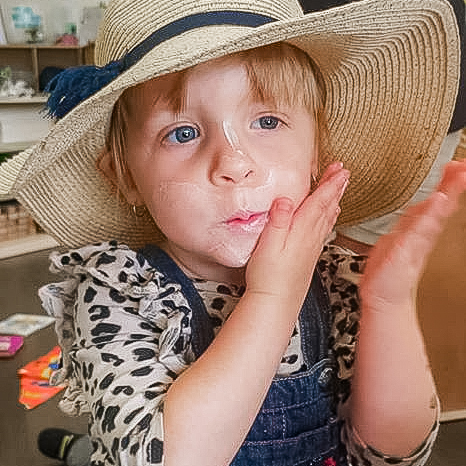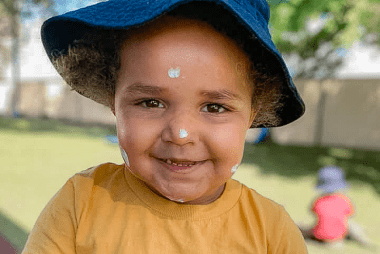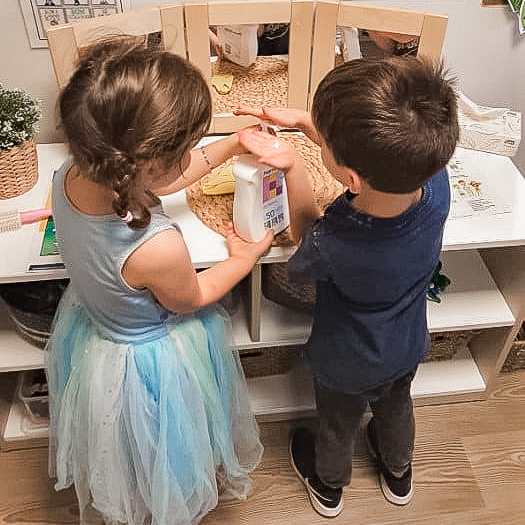
Image: Busy Bees at Fraser Coast
The Australian summer makes many of us feel instantly happy and nostalgic with the thought of holidays, beaches, family time and a good dose of Vitamin D.
Keeping kids sun-safe while they enjoy the outdoors is an essential part of a child’s health and well-being, especially in Australia, where UV radiation levels are high.
Too much sun can lead to painful sunburns, dehydration, and long-term skin damage, and because children’s skin is extra sensitive, they’re even more vulnerable to harmful UV rays, even on cloudy days.
It is important to be sun safe not only in summer but throughout the year, as the sun’s ultraviolet (UV) rays can be strong here in Australia even through the cooler months. According to the Cancer Council, current evidence suggests that childhood sun exposure makes an important contribution to the lifetime risk of skin cancer.
Talking about sun protection as part of your everyday routine can develop lifelong habits that keep them safe while they play, explore, and soak up the fun. The good news? A little sun-smarts go a long way.
Here’s how you can talk to your child about sun safety in a way that is engaging, simple, and effective.

Image: Little Legends by Busy Bees
Why is sun safety important for kids?
Kids love playing outside, but too much sun exposure can be harmful. Growing up near the beach and frequently exploring the outdoors is very common for many young children growing up in Australia. Even though Aussie kids love the sun, too much sun exposure can be harmful. Their skin is more delicate than adults, which means they burn more easily. What might seem like a harmless sunburn today could increase their chances of skin conditions later in life.
Although young children might not be able to process and acknowledge the serious risks associated with sun exposure at such an early age, it is still important to provide them with some knowledge on the importance of sun protection to help them develop independent sun protection skills for life.
Understanding UV exposure and sun damage risks
Understanding when and where UV exposure is highest helps you take the right precautions to keep little ones safe while enjoying the outdoor. Children are at most risk of sun damage during peak UV hours, typically between 10 AM and 4 PM, when the sun’s rays are strongest. Reflective surfaces like water, concrete, and snow can also intensify exposure. That’s why sun safety isn’t just a summer thing—it’s something to practice all year round.
Having fun in the sun – the sun-smart way!
So, how can you make sun safety fun and engaging?
Talking to young children about sun safety doesn’t have to be serious or scary. Instead, turn it into an interactive and enjoyable experience. Here are some ways to do that:
- Use Play and Storytelling: Create stories about superheroes who wear hats, sunglasses, and sunscreen to protect their super skin. Or watch the Slip, Slop, Slap, Seek and Slide video where Sid the Seagull explains how to best protect ourselves from the sun during sun protection times.
- Sing Sun Safety Songs: Make the topic of sun safety fun. SunSmart have created a collection of short songs that promote sun protection, sung to the tunes of familiar children’s classics. You may choose to take some time to sing these songs with your child.
- Role-Playing Games: Lead by example by practicing good sun protection techniques. Pretend to be the sun and ask your child how they can stay safe while playing outside. Some sun protection techniques include: shade, protective clothing, hats and sunglasses and sunscreen. Often children will follow in the behaviours demonstrated by their parents, family and friends so if you take sun safety precautions yourself, your child will most likely follow suit. Some ideas on how to get your child involved in practicing sun protection can be found on the SunSmart website.
- Use Technology: The SunSmart Global UV app can help show real-time UV levels and teach children when extra protection is needed.
- Children usually have a natural drive to be independent and do things on their own. By encouraging your child to practice applying the five key sun protection measures give them confidence and excitement to continue doing so.

Image: Busy Bees at Woolloongabba
The Five Steps to Staying Sun Smart
A simple way to build sun safety habits is by following the five key sun protection measures:
- Slipping on a hat – Keep Sun Protection Accessible – Store hats, sunglasses, and sunscreen near the door for easy access before going outside. Encourage kids to wear long-sleeved shirts and pants made from tightly woven fabrics to block UV rays.
- Slop on Sunscreen – Make Sunscreen Application a Routine – Apply sunscreen together before heading outside, just like brushing teeth. Choose a broad-spectrum SPF50+ sunscreen and make applying it a fun part of their routine.
- Slap on a Hat – A wide-brimmed or legionnaire-style hat protects the face, ears, and neck from harmful UV exposure.
- Seek Shade – Teach children to play under trees, umbrellas, or shade structures during peak sun hours.
- Slide on Sunglasses – Sunglasses that meet Australian safety standards help protect children’s eyes from UV rays.
Sun Safety for Babies and Toddlers
Infants under 12 months should be kept out of direct sunlight when UV levels are high. For babies:
- Dress them in lightweight, long-sleeved clothing with a UPF rating of 50+.
- Use wide-brimmed hats and stroller shades.
- Avoid sunscreen on infants under six months; rely on shade and protective clothing instead.
Sun Safety for All Skin Types
- Even children with darker skin need sun protection. While melanin offers some natural UV resistance, it does not prevent long-term skin damage or reduce the risk of eye damage. Teaching sun safety habits to all children ensures their skin remains healthy.
Teaching Sun Safety at Busy Bees
At Busy Bees, we are committed to protecting all children and Educators from the harmful effects of UV radiation from the sun. We aim to provide appropriate practices in relation to the management of sun protection, while teaching children good sun protection habits from an early age.
Sun protection is part of the Busy Bees learning program and every Service follows the Slip, Slop, Slap, Seek and Slide recommendations. Sunscreen SPF30+ or higher broad spectrum (water resistant) is provided at each Busy Bees Service and children from the age of three years are given opportunities to apply their own sunscreen under supervision of staff to help develop independent skills ready for school.
Busy Bees has a Sun Protection Policy in place that is available to all employees, Families and visitors. To find out more, speak to your Busy Bees Service Manager. Let’s continue working together to ensure our children stay safe from the sun which is so important while enjoying the amazing lifestyle that Australia offers.